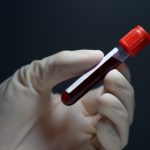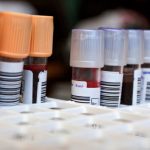 Hemochromatosis (excess iron) raises the risk of heart arrhythmia and cirrhosis of the liver. Unlike anemia, which is a condition of too little iron, hemochromatosis is the build-up of too much iron in the body.
Hemochromatosis (excess iron) raises the risk of heart arrhythmia and cirrhosis of the liver. Unlike anemia, which is a condition of too little iron, hemochromatosis is the build-up of too much iron in the body.
Iron can be found in many of the foods we eat, including red meat.
Advertisement
Too much of anything is bad for you, and too much iron can actually be toxic. Excess iron can lead to the poisoning of organs and lead to organ failure.
Too much iron can negatively impact the heart, liver and pancreas. Too much iron in the heart can lead to irregular heart beats, or arrhythmia. Too much iron in the pancreas can contribute to diabetes.
Hemochromatosis causes
 Hemochromatosis can be caused by a gene mutation that affects how the body absorbs iron from the foods we eat. This gene mutation, which causes hemochromatosis, can be passed down from parent to child.
Hemochromatosis can be caused by a gene mutation that affects how the body absorbs iron from the foods we eat. This gene mutation, which causes hemochromatosis, can be passed down from parent to child.
The hereditary gene mutation is known as HFE. HFE has two gene mutations, known as C282Y and H63D. Each parent passes down a mutated HFE to the child. If a child inherits both mutated genes, they have a 70 percent risk of developing hemochromatosis. If you only have one of the genes, then your partner would also need the gene in order to pass on hemochromatosis to your child.
There are three different types of hemochromatosis: juvenile, neonatal and secondary. In juvenile hemochromatosis, symptoms appear between 15 and 30 years of age. This is caused by a mutation of the HJV gene.
Neonatal hemochromatosis is a severe type caused by iron rapidly compiling in the liver during the development of the fetus. This condition is thought to be an autoimmune disease.
Lastly, secondary hemochromatosis is not inherited, and the iron deposits are caused by other conditions, such as anemia or chronic liver disease.
Hemochromatosis symptoms
Hemochromatosis symptoms include:
- Joint pain
- Fatigue
- Weakness
- Diabetes
- Low libido
- Impotence
- Heart failure
Hemochromatosis complications
Because excess iron is toxic to the body, it can contribute to complications, especially if left untreated. Complications of hemochromatosis are:
- Liver problems like cirrhosis
- Pancreas problems, which can lead to diabetes
- Heart problems like arrhythmia, chest pains or heart failure
- Reproductive problems like erectile dysfunction and absence of menstrual cycles
- Skin color changes – skin may appear brown or grey
Hemochromatosis treatment
 Primary treatment of hemochromatosis involves blood removal. Blood is removed on a regular basis in order to remove excess iron. The amount of blood taken depends on age, level of health and the severity of hemochromatosis.
Primary treatment of hemochromatosis involves blood removal. Blood is removed on a regular basis in order to remove excess iron. The amount of blood taken depends on age, level of health and the severity of hemochromatosis.
During the initial treatment a patient may have a pint of blood removed once or twice a week and the procedure is similar to donating blood. Follow-up blood removal depends on how high iron levels are; the patient may go less often to get blood drawn, and appointments are based on how long it takes the body to accumulate iron.
Advertisement
If you are unable to do the blood removal treatment because you have another condition that prevents it – anemia or heart complications – your doctor may opt to have a medication injected or take a pill. The medication helps your body expel excess iron through your urine or bowel movements.
Hemochromatosis diet
As mentioned, food can contain iron, so if your body is accumulating iron too quickly, you will want to minimize your intake of iron as much as possible. Common foods that contain iron are:
- Red meat
- Pork
- Poultry
- Seafood
- Beans
- Dark leafy vegetables
- Dried fruit
- Fortified foods like cereal
If you have hemochromatosis, it’s a good idea to minimize your intake of such foods. Other dietary considerations are:
- Avoid foods high in animal fat.
- Limit vitamin C supplements – vitamins C helps absorb iron.
- Consume alcohol in moderation.
- Avoid sugary foods and beverages.
- Consume tea or coffee with meals to help reduce absorption of iron.
- Eat plenty of foods that are high in antioxidants and fiber to prevent free radical damage.
